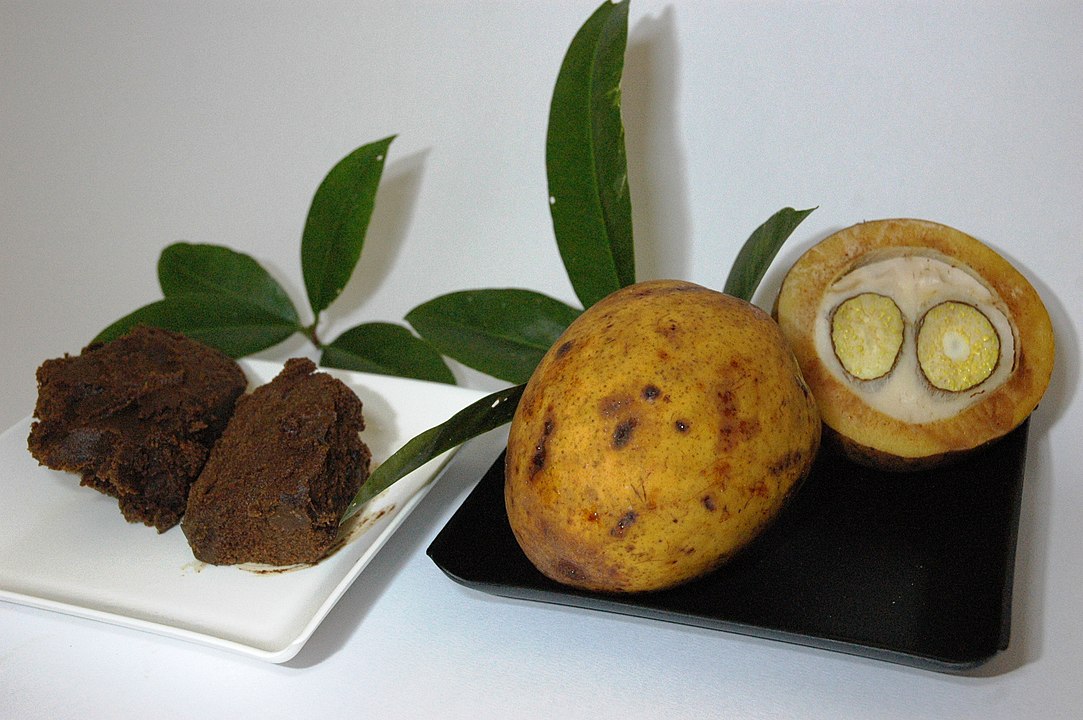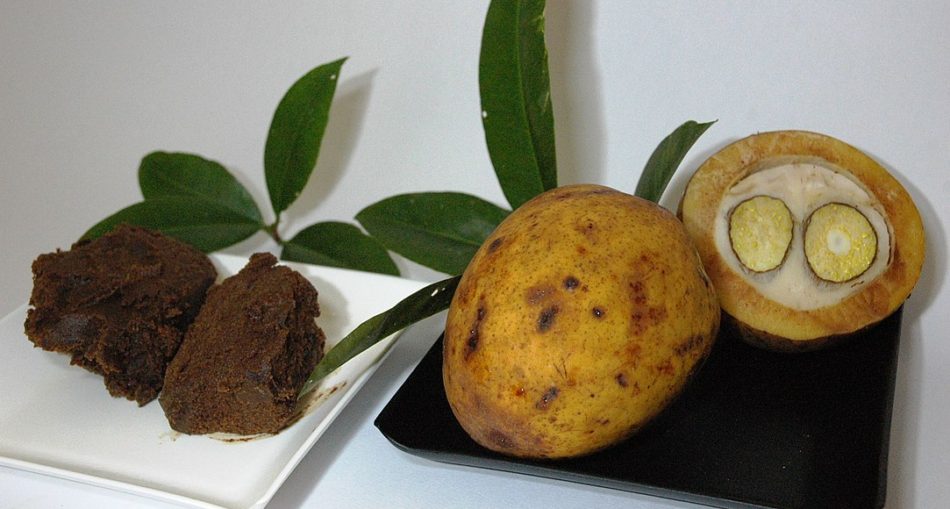Pakuri or Platonia insignia is a little known plant in Guyana. However, as the namesake of Pakuri Village otherwise known as St. Cuthbert’s Mission the plant is a part of local culture. Pakuri Village was named after the Pakuri trees which are native to the area. These trees are gigantic and prized for their wood and the oil byproduct. Platonia insignia is the only species in the genus of Plantonia. The scientific name of the fruit is Platonia insignia but it is known by several names depending on the region. These include bacurí, bacury, bakuri, pacuri, pakuri, pakouri, packoeri, pakoeri, maniballi, naranjillo and bacurizeiro. The tree is most noted for its oil, made from its seeds which is a skin softening and rejuvenating agent. Read on to find out eleven (11) various uses of this tree.

Pakuri Fruits & Butter made from its Seeds – Photo By P. S. Sena – Own work, CC BY-SA 4.0, https://commons.wikimedia.org/w/index.php?curid=37381677
Origin of Pakuri
Pakuri or Platonia insignia is native to the humid, dense forest of South America in countries like Guyana, Brazil, Paraguay, parts of Colombia and the Amazon Rainforest.
Description of Pakuri
Platonia insignia or Pakuri as it is known locally is a dry-season deciduous tree with a pyramidal crown. This tree reaches astounding heights ranging from twenty-five to forty (25-40) metres. The heartwood of Pakuri trees is a dull dull-yellow to orange-brown with numerous black streaks, while its sapwood is yellowish-white. Texture ranges from coarse to medium with occasionally irregular grain. The leaves of the Pakuri tree are a dark glossy green, typically growing opposite each other. They are also elliptic or oblong about eight to fifteen (8-15) cm in length with wide margins and texture similar to leather. Platonia insignia flowers are pink, with five petals and a number of stamens. Each is about five to seven (5–7) cm long. The shapes of Pakuri fruits are typically oval, seven to fourteen (7-14) cm in length with thick, yellow skin, resembling papayas. The bark contains a copious yellow latex and their fruit rinds produce a yellow latex when pressed. Pakuri has a sticky, fragrant white pulp with a taste of sweet and sour. There are usually three to five (3-5) seeds in the fruit.
Interesting Tip
- The wood of Platonia insignia is resistant to termites and wood borers.
Scientific Classification of Pakuri
- Kingdom: Plantae
- Clade: Tracheophytes
- Clade: Angiosperms
- Clade: Eudicots
- Clade: Rosids
- Order: Malpighiales
- Family: Clusiaceae
- Tribe: Symphonieae
- Genus: Platonia
Mart. - Species: P. insignis
Culinary Uses of Pakuri
- The Pakuri (bakuri) is usually grown for its tangy fruit which is used to make beverages and condiments.
- Platonia insignia fruits, either raw or cooked are used to make ice cream, jelly marmalade and sherbet.
Medicinal Uses of Pakuri
- It contains high levels of phosphorus, iron, and vitamin C. The oily brown seeds are used as a home remedy to treat skin conditions.
- In a home remedy to treat skin conditions, the oily brown seeds are used.
- An oil extracted from the seeds is mixed with sweet almond oil and used to treat eczema and herpes.
- A decoction of its astringent bark is used to treat diarrhoea.
Other Uses of Pakuri
- Its yellowish wood is frequently used as timber.
- Candles and soap can be made from the non-drying bakuri oil obtained from the seeds.
- From the bark is produced a fibre that is used for making cords.
- A black, viscous resin gotten from the Pakuri bark can be used in the caulking of boats.
- The wood of Platonia insignia is used for construction, in furniture making, flooring, carpentry and even ship- building.
Interesting Tip
- Bacuri or Pakuri oil has a high absorption rate because it contains large amounts of tripalmitin which quickly penetrates the skin.
- The oil makes a good moisturizing and skin softening agent since it has a high amount of fatty palmitoleic acid when compared to other oils.
About Pakuri
The Pakuri fruit is not a widely known fruit in Guyana but is very popular in neighbouring Brazil where it is called ‘bacuri’ or ‘bakuri’. It is highly valued for its wood, used in furniture making, which accounts for the declining number of trees in the world. This little known fruit is popular for its oil byproduct used in many skin treatments.
Article References
- https://en.wikipedia.org/wiki/Platonia
- http://tropical.theferns.info/viewtropical.php?id=Platonia+insignis
- https://pfaf.org/user/Plant.aspx?LatinName=Platonia+insignis
- https://elmaskincare.com/h_menu/v_bacuri.htm
- https://en.wikipedia.org/wiki/St._Cuthbert%27s_Mission,_Guyana







